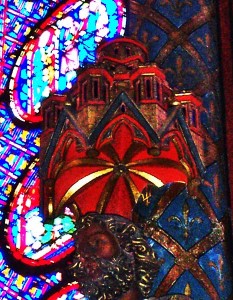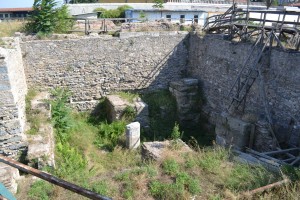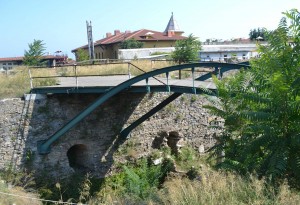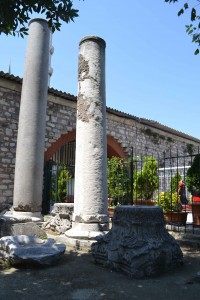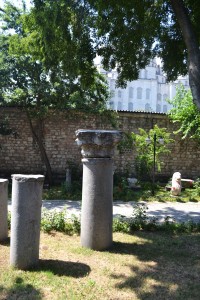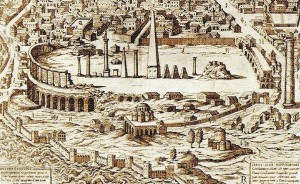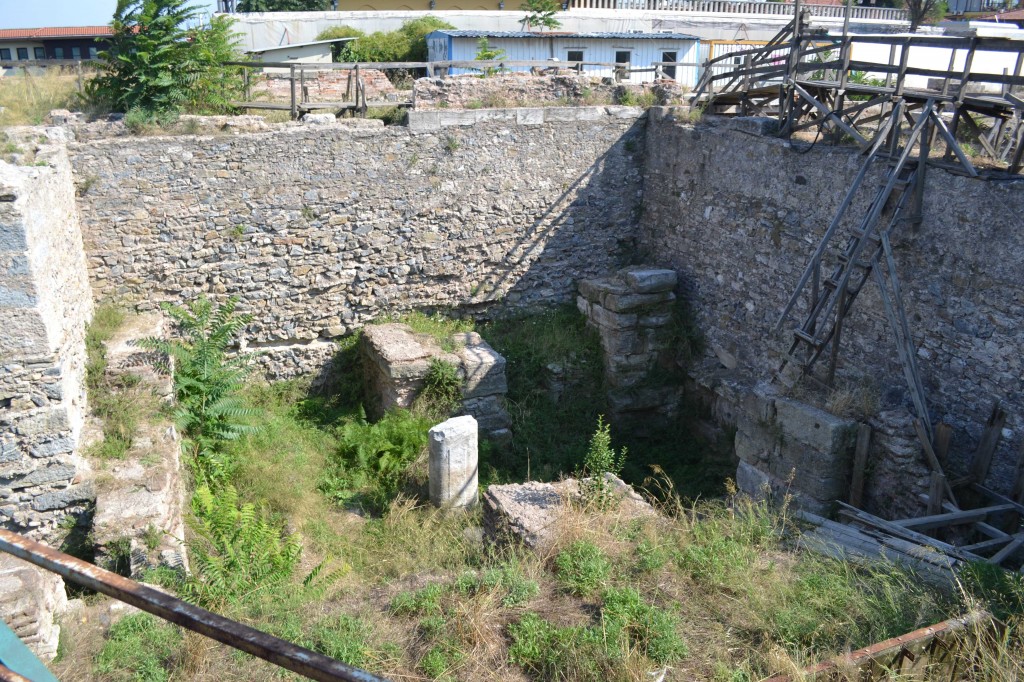

Posted August 13, 2014 Posted by Adam in Uncategorized
Constantine’s Great Palace was a massive conglomeration of buildings extending from the south side of Aya Sofya to the Nea Ekklesia (New Church) close to the Bucolean Palace on the Marmara shore. During the 11th century, the royal household moved out to the Palace of Blachernae in the new gated estate up the Golden Horn. When the Latins invaded in 1204, they were disappointed with the plunder available in the no longer Great Palace but had a go at it anyway. The Latin emperors were awful at balancing the budget and the last of them sold the lead from the roof. The latter Byzantine emperors spent their time having the empire whittled away underneath them and becoming steadily more inbred so when Mehmet II took over the whole shebang in 1453, he muttered a mournful Persian couplet and demolished the remains.
A number of excavations have taken place since the 19th century as fires, explosions and general neglect have opened up piecemeal access to archaeologists. In 2014, the planned archaeological park seems no nearer to opening than it did five years ago and I continue to be rebuffed by the enormous security guard who is always at the Topkapı entrance when I try to weasel my way in. Various bits of the palace are accessible. The Mosaic Museum has a nice collection of churchy remains but leaves them outside. A tower of Magnaura Palace is now part of a pleasant restaurant. However, details of the churches in the Palace complex are sketchy. Two have a reasonable amount of documentation from the past but little to show in the present. There is some conjecture that ethics associated with excavations from the building of the Four Seasons Hotel are somewhat less than kosher.
The Church of the Virgin (Theotokos) of the Pharos was built near the throne room of the Daphne Palace, close to the present site of the columns shown in the pictures below. This was a small but intimidatingly magnificent church. According to Cyril Mango, Patriarch Photios said in about 864 that when entering, one had the ‘feeling that one had entered heaven itself, a divine and venerable second palace for the Virgin Mary on earth’ (Maguire (1997) p64). Anthony of Novgorod visited just before the Latin invasion and listed a fine set of relics including the true cross, the nails, the crown of thorns and the lance used to pierce Christ’s side. The fine appearance and unparalleled collection of Christ-related items led to the church being called La Sainte Chapelle by the French crusaders. These relics were passed to Baldwin I after the 1204 invasion. The cash-strapped Latin emperors slowly sold them over the years until by the time the Byzantines retook the city in 1261, the church was gone and most of the relics had been acquired by King Louis IX, who built la Sainte Chapelle in Paris to house his hoard. This magnificent building, consecrated in 1248 is thought to be a conscious imitation of the Church of the Virgin of the Pharos (but with more stained-glass windows).
The Nea Ekklesion was a much bigger affair, an attempt by emperor Basil I to recreate the glamour of the Justinian era by building a massive church to his own glory. It had a large central dome and a cross-in-square shape with a dome atop each arm of the cross. It housed another improbably large collection of high-profile relics and seems to have had a nice selection of fountains to complement its excellent site above the sea. There is little record of it after the tenth century. The Ottomans stored gunpowder in the hulk of the building. Inevitably, it exploded when lightning struck it in 1490. Remains were fragmented. It’s hard to do a 3D jigsaw with brick dust.
Records also survive of the church of St Stephen in the Daphne Palace. This was also a relic storehouse. I don’t think anyone has claimed to identify the site yet.
This engraving, by Onofrio Panvinio in De Ludis Cirensibus, shows the ruins of the great Palace in the latter years of the 16th Century. The large church at centre bottom is the Nea Ekklesia, to the right of that is probably the Theotokos of the Pharos, and on the far right (beneath the column) is likely to be the remains of St Stephen of the Palace of Daphne.

Posted August 13, 2014 Posted by Adam in Uncategorized
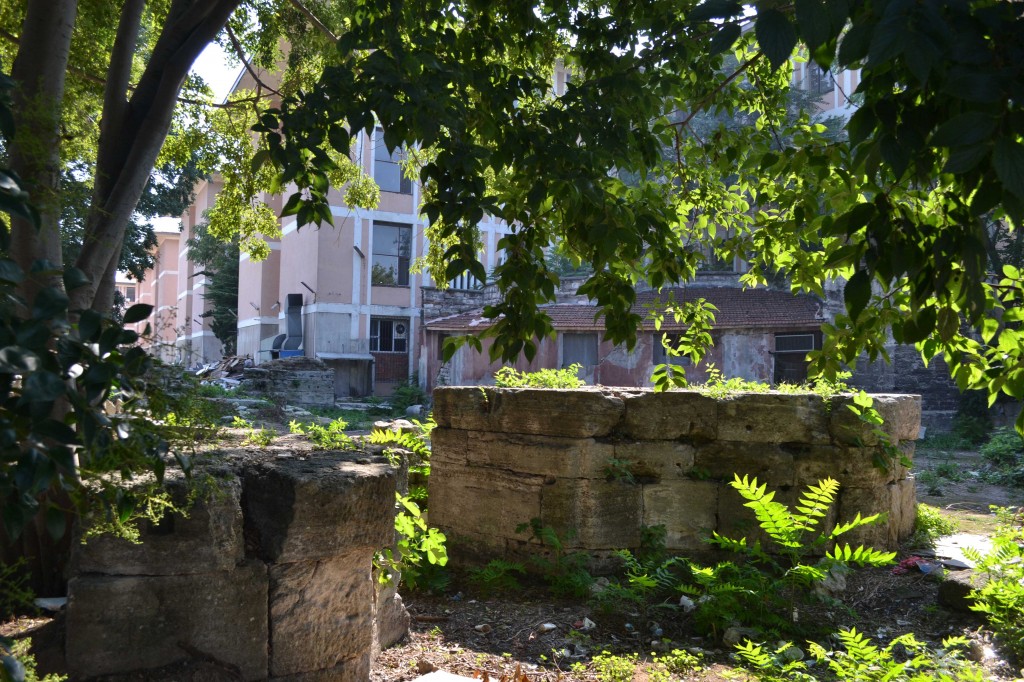

Posted August 13, 2014 Posted by Adam in Uncategorized
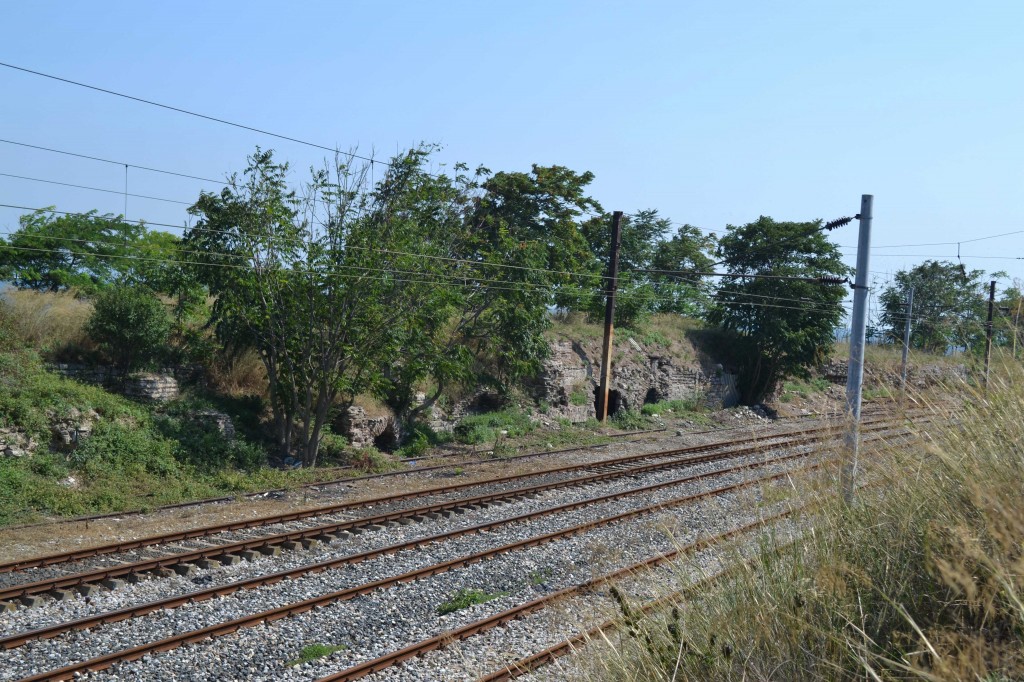

Posted August 13, 2014 Posted by Adam in Uncategorized
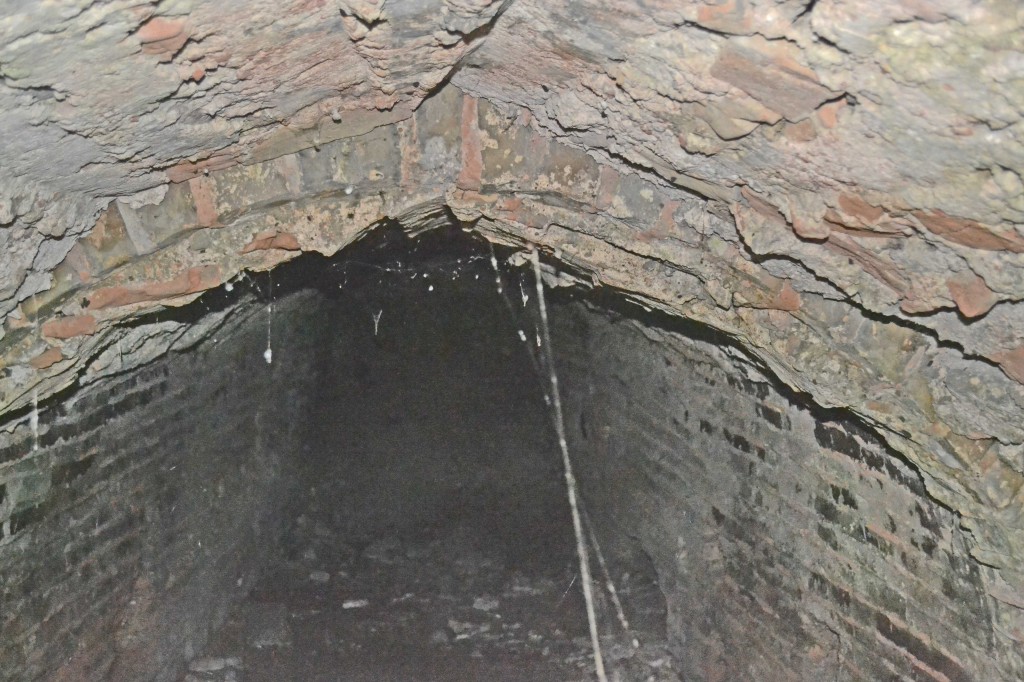

« Previous Entries Next Entries »

